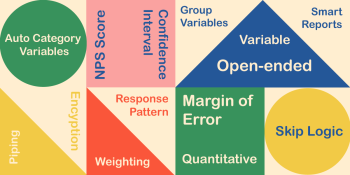Kathryn Bowes and Jayana van der Maten at iThoughts Research explain how to ensure screening is concise, effective, and falls in line with guidelines.

Qualitative research
Qualitative research is about understanding how people think and feel about something – often an organisation or product – and the reasons behind their opinions. From this we can gain insights into solving problems or helping develop new ideas.
The qualitative research screener
It is essential to recruit the right people whose views will give the greatest benefit to our market research project. For this purpose, a recruitment questionnaire or ‘screener’ is vital. It is one of the tools we must use to ensure that a participant qualifies for the research. Other tools include verbal communication to gauge comprehension and confidence and pre-checks to validate the information given by participants in the initial screening.
Considering GDPR
There are several areas that all questionnaire authors need to address. With the introduction of GDPR, all respondents must be clearly and explicitly asked to consent to any and all uses of their personal or sensitive data. The screening questions should not be too leading but they also need to record only relevant information. Considering the length of screening is important; we do not want to put off potential participants with a long screening process. Some screening processes may benefit from using segmentation or typing tools.
Capturing consent
Whilst there is always a paragraph to explain the terms and clauses of these regulations, at iThoughts we use grids to capture consent. Not only are these easy for external suppliers to use but they also make it very clear what has been consented to. We must always ensure that all parties who will receive personal information are disclosed at screening; no one likes unexpected surprises with data!
The matter of leading questions
A questionnaire can take up to 4 ½ hours to write and another 1 -1 ½ hours to be thoroughly checked. When trying to keep the questionnaire as simple as possible, questions can become a little more leading than desired. At iThoughts, we aim to include at least 5 other ‘similar’ options in any question designed to check brand usage or brand attitudes. In addition (and as per the MRS guidelines) all questions have ‘other’ and ‘none of the above’ options to ensure participants always have an answer that best reflects their position.
Disguising intent
An additional step taken to avoid encouraging a certain answer from respondents is to carry more than one option into the follow up question. For example, if we wanted to find people who purchase milk at least twice a week, we would start with a general question:
“Which of the following items, if any, do you purchase at least once a week?”
And follow up with a more targeted question:
“You mentioned that you purchase Milk and [INSERT X2 OTHER ITEMS SELECTED AT QX] at least once a week. Please can you tell me exactly how often you purchase these items?”
This should disguise the exact item you are hoping participants will use, hopefully throwing them off the scent.
Screening
While questionnaires are designed to flow naturally, it is always important to allow for some flexibility in the order or manner that the questions are asked when screening potential participants. This ensures a potential participant is not kept talking for longer than necessary. This is especially relevant when speaking to B2B respondents who rarely have more than 5 minutes in their busy schedule to hear about our research. With audiences that carry a low incidence rate, it may be advisable to ask the main quota questions first, provided these are not too leading.
Following this, the length of the overall process needs to be assessed.
Lengthy questionnaire = lengthy deliverables
Unnecessary questions are typically included in recruitment questionnaires for the sole purpose of data collection. This means that participants are often taken through a questionnaire for 20+ minutes, when 10 minutes would have been sufficient. All this information then needs to be transposed into a profile document, sometimes taking upwards of 1 hour to complete. Then another party will need to check/review all information, adding on more time.
With this in mind, having an overly long questionnaire is not beneficial to many parties and can lead to costs vs. benefits discussions if external suppliers are needed to fulfil the project.
Pre-tasks
If any additional information is needed before the interview, but is not part of the screening picture (e.g. it is a ‘record for information’ rather than a qualifying question), iThoughts would suggest adding an additional pre-task for participants to complete, to be returned at least 24 hours prior to the session.
This way, the required information is gathered separately from the screening stage and respondents are more inclined to fulfil this requirement. They are typically incentivised for their time.
Segmentation tools
The general consensus when a separate segmentation or typing tool is needed to target specific segments of the population is that the total screening time must not exceed 10 minutes. At iThoughts, we always advise that the recruitment questionnaire is kept as simple and short as possible to avoid respondents dropping out at the screening stage due to the complexity of the questionnaire.
Conclusion
In conclusion, addressing these areas will help the screening process run smoothly and lead to recruiting the best fit participants for the market research project.



